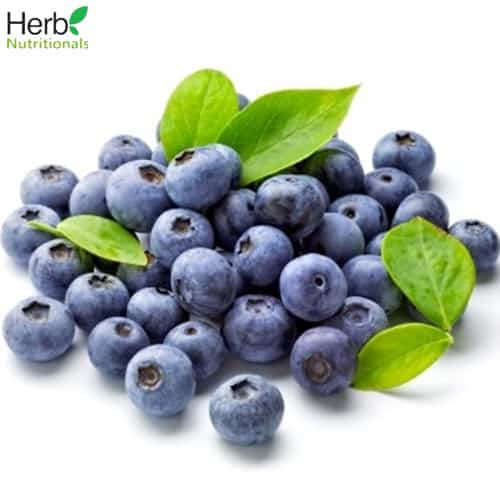A latest study on pterostilbene published in springer and pubmed in May 2015 shows that pterostilbene may stimulate nitric oxide, and may be applied in sports nutrition supplements as a good alternative for L-citrulline, agmatine sulfate, L-argine, AAKG, beet root, etc.

pterostilbene
The below words are cited from the research:
Endothelial dysfunction, a key process in development of cardiovascular diseases, is largely due to reduced nitric oxide (NO) derived from endothelial NO synthase. Resveratrol has been reported to stimulate NO production via estrogen receptor α (ERα) activation in endothelial cells. Here, we investigated whether two natural methylated analogs ofresveratrol, pterostilbene and trans-3,5,4’ -trimethoxystilbene (TMS), similarly to resveratrol, could influence endothelial NO release in human umbilical vein endothelialcells (HUVECs). In HUVECs exposed to pterostilbene or TMS, NO productionand phosphorylation of endothelial NO synthase, protein kinase B (Akt),and ERα were measured by using a fluorimetric NO assay kitandWestern blot analysis, respectively. Dimethylated pterostilbene, but not trimethylated TMS, stimulated dose-dependent NO production via endothelial NO synthase phosphorylation. Pterostilbene also stimulated dose-dependent phosphorylation of Akt, but not of ERα. NO production and endothelial NO synthase phosphorylation in response to Pterostilbene were significantly abolished by the phosphoinositide 3-kinase (PI3K)/Akt inhibitorLY294002, but not by the ERα antagonist ICI182780. Our results suggest that pterostilbene, but not TMS, is capable of inducing endothelial NO synthase phosphorylation and the subsequent NO release, presumably, by activating PI3K/Akt pathway. The potential efficacy of pterostilbene, an active constituent of blueberries, may aid in the prevention of cardiovascular diseases characterized by endothelial dysfunction.
Introduction
Pterostilbene (trans-3,5-dimethoxy-4’-hydroxystilbene; Pts) is a natural dietary compound predominantly found in blueberries. It is a natural dimethylated analog of resveratrol(trans-3,5,4’-trihydroxystilbene) that shows health benefits, including cardioprotective activities . Because of their structural similarity, Pterostilbene and resveratrol have very similar pharmacologic properties; however, due to the presence of two methoxyl groups, Pterostilbene has increased bioavailability in comparison to resveratrol. Indeed, Pterostilbene has been demonstrated to have 80 % bioavailability compared to 20 % for resveratrol in animal studies. Another natural trimethylated analog of resveratrol, trans-3,5,4’-trimethoxystilbene (TMS), has greater plasma exposure, a longer half-life and lower clearance rates in rats.Endothelial dysfunction has been implicated not only in many cardiovascular diseases but also in the pathogenesis of atherosclerosis. Endothelial dysfunction is characterized by reduction of the bioavailability of vasodilators, particularly endothelialnitric oxide (NO), and/or an increase in endothelium-derivedcontracting factors. NO, which is synthesized endogenouslyby NO synthase (NOS), has a wide range of biological properties. In endothelial cells, NO is produced mainly by endothelialNOS (endothelial NO synthase), of which activity is regulated not only by increased intracellular Ca2+ levels but also by its phosphorylation. At least six endothelial NO synthase phosphorylation sites have been identified so far; however, major changes in endothelial NO synthase function have been reported for the phosphorylation of serine 1177 (for activation)and threonine 495 (for inhibition) in the human endothelial NO synthase sequence. The endothelial NO synthase phosphorylation has been shown to be regulatedby a complex series of regulatory mechanisms. A number of kinases have been reported to phosphorylate endothelial NO synthase and increaseNO production. Some of them, such as protein kinase A, are activated by an increase in intracellular Ca2+, whereas kinases,such as phosphoinositide 3-kinase (PI3K)/protein kinase B (Akt),can be activated independently of an increase in intracellularCa2+ .
There is a growing body of evidence that some naturally occurring compounds derived from dietary sources or from specific medicinal plants may positively influence endothelial NO production and, thus, promote endothelial function. The identification of such compounds and better understanding of their molecular mechanism of action may provide valuable strategies for the prevention of cardiovascular diseases. It has been previously reported that the naturally occurring resveratrol is capable of stimulating NO production through its activation of estrogen receptor α (ERα) in endothelial cells; and this prompted us to examine whether pterostilbene, a dimethylated analog of resveratrol, andTMS, a trimethylated analog of resveratrol, could also stimulate endothelial NO production. Thus, the goal of the experiments reported in this paper was to examine whether two methylated analogs of resveratrol, pterostilbene and TMS, could influence endothelial NO synthase phosphorylation and NO release in cultured human umbilical vein endothelial cells (HUVECs).
The detailed materials and methods, analysis, results and discussion of pterostilbene experiments are available in the PDF file title Pterostilbene, an Active Constituent of Blueberries, Stimulates Nitric Oxide Production via Activation of Endothelial Nitric Oxide Synthase in Human Umbilical Vein Endothelial Cells
Conclusions
This study, for the first time, demonstrates that pterostilbene, an active constituent of blueberries, is capable of inducing a concentration-dependent NO release via endothelial NO synthase phosphorylation in endothelial cells. This effect is mainly mediated by activation of the PI3K/Akt signaling pathway, although the activation of other kinases cannot be ruled out. The potential efficacy of pterostilbene could aid in the prevention of vascular diseases characterized by endothelial dysfunction. However, it is important to note that the effects of pterostilbene described in this study were obtained with high concentrations that could not be measured in human plasma after dietary consumption, such as intake of blueberries containing pterostilbene. It is suggested that a pharmacological intervention for pterostilbene treatment could be necessary to reach higher plasma levels. It is noteworthy that a recent study has demonstrated that pterostilbene reduces blood pressure in human subjects at 250 mg/day doses . Considering thee ffect of pterostilbene on stimulating endothelial NO production that contributes to the regulation of blood pressure, such an anti-hypertensive effect of pterostilbene may be associated with increased endothelial NO release.

